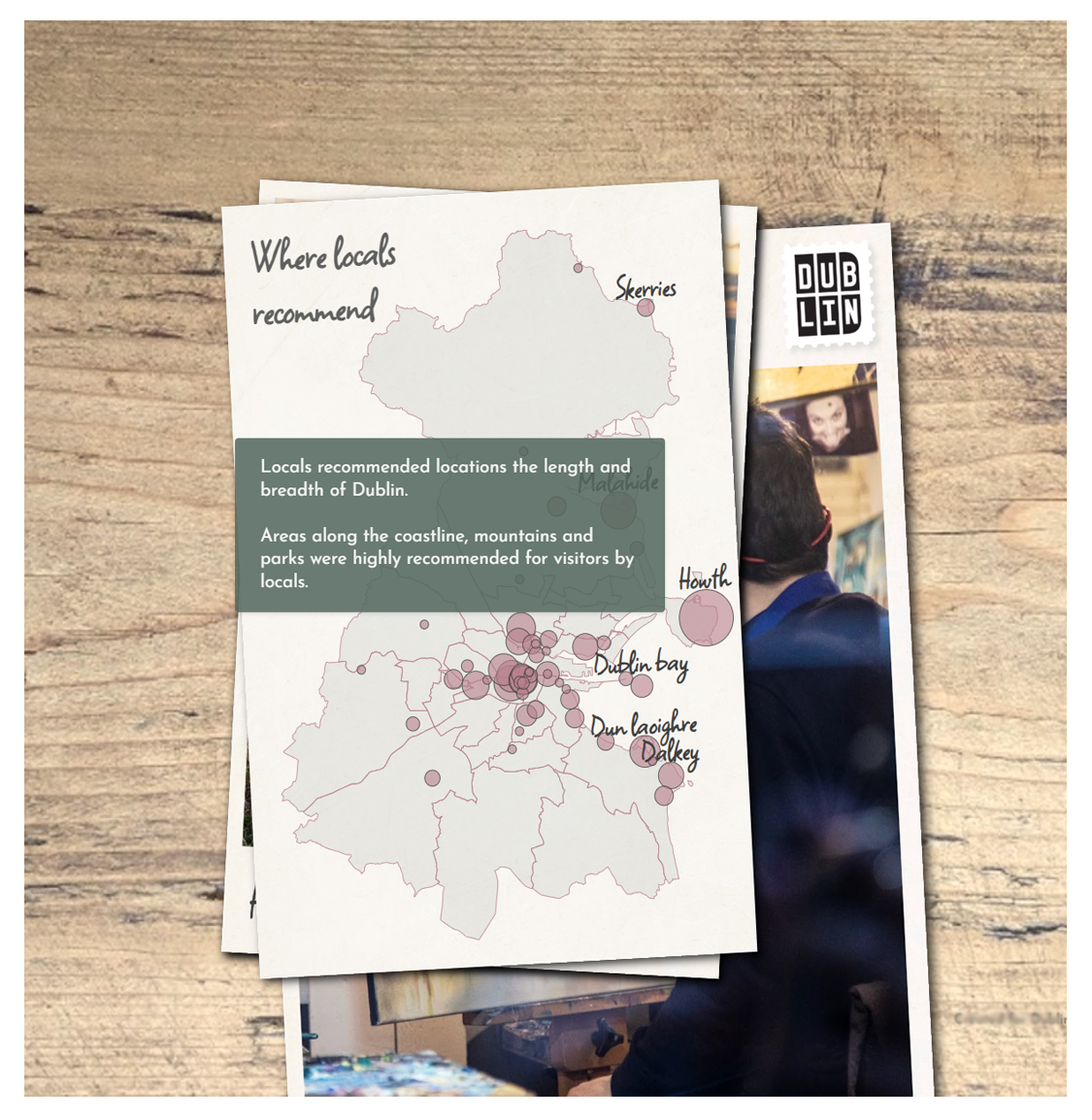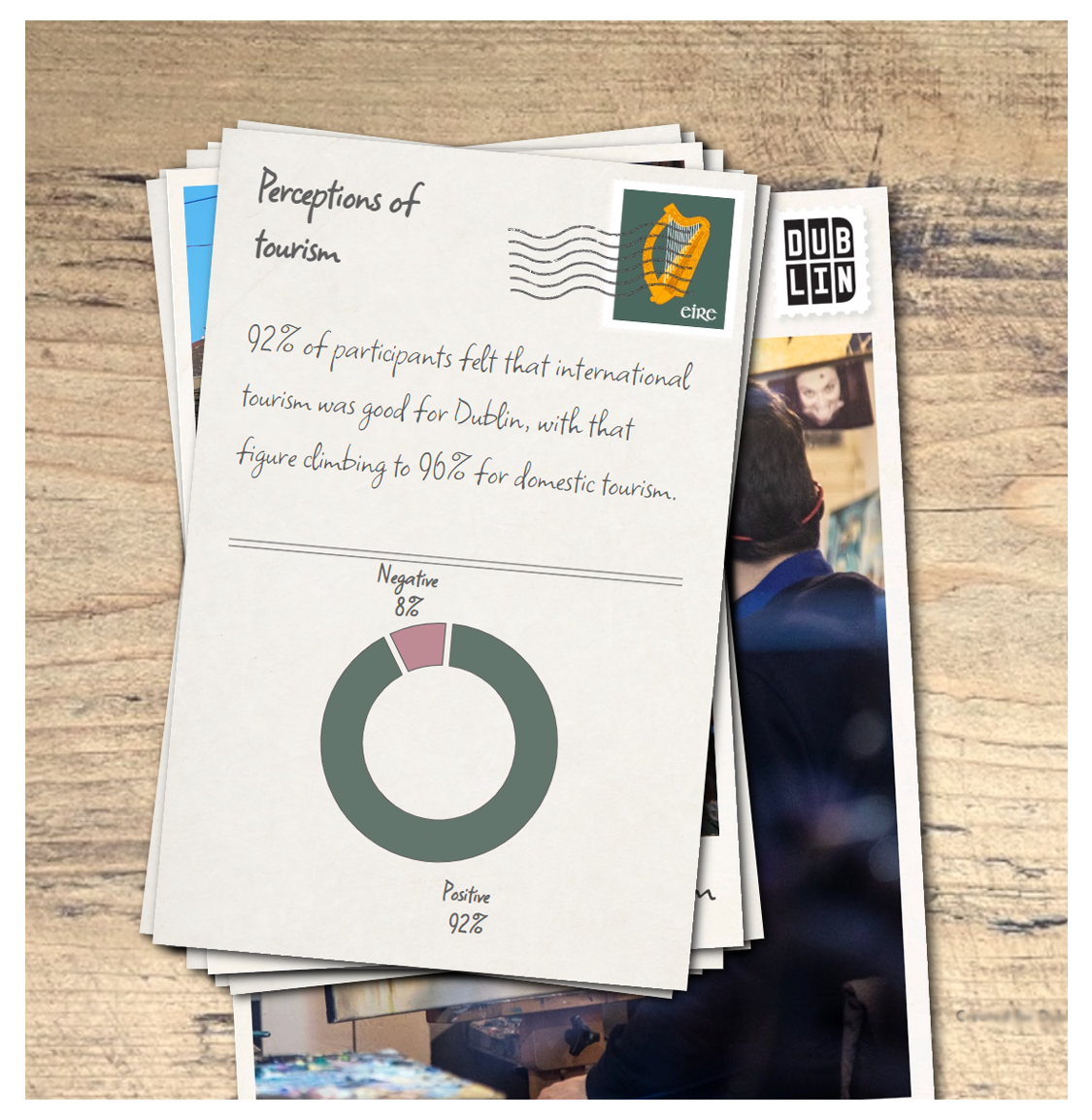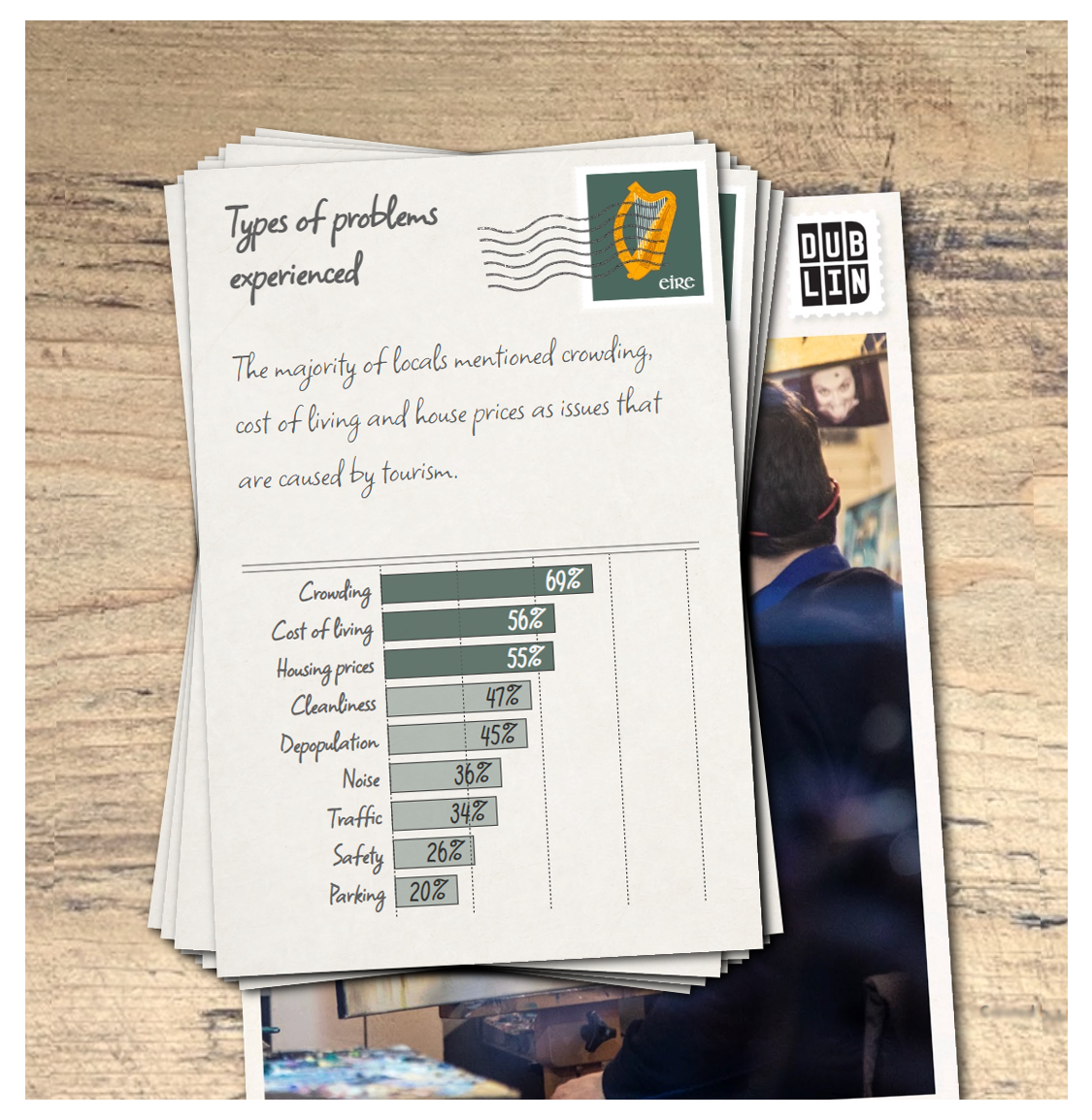In May last year, as part of the research and consultation for the new Dublin City Tourism Strategy 2023-2028, Our newly established Dublin City Council tourism unit in collaboration with our Economic Development team issued our first large-scale survey on attitudes towards tourism in Dublin city. This survey used the existing “Your Dublin, Your Voice” online opinion panel to understand how tourism affects Dubliners’ day-to-day lives and what they believe constitutes a real Dublin tourism experience.
The survey of over 30 questions asked respondents across Dublin how they felt about tourism in the city and what authentic experiences they would recommend first time visitors. The survey attracted responses from nearly 1,100 respondents from across the Dublin region, providing rich insights to Dublin City Council about how Dubliners feel about tourism in their city and how they feel tourism should develop into the future.
Importantly, the survey was benchmarked against other city destinations in Europe such as Copenhagen and Helsinki as well as internal Fáilte Ireland sentiment surveys. Benchmarking local sentiment against other cities is very important as it allows us to compare Dublin’s performance against similar cities. Monitoring this sentiment on an ongoing basis then allows us to understand if the deliverables of our new strategy are having a net positive effect on citizen sentiment toward tourism in the city.
Following the survey, the vision was to bring this survey data to life in a unique and creative way enabling the data to be visualised in a novel and engaging manner. This project was inspired by conversations with the Wonderful Copenhagen tourism brand team and their work in building a local sentiment platform called 10XCopenhagen.
“We undertook our first large scale tourism survey via Your Dublin, Your Voice to inform our new Tourism Strategy 2023-2028. We wanted to bring the data and results to life via novel and interactive visualisations and working with Rudi O’Reilly Meehan from Data & Design we co-created the the ‘Dear Dublin’ concept. We are now delighted to launch the results of this engagement through our European Capital of Smart Tourism 2024 engagement programme,” said Barry Rogers Head of Dublin City Tourism Unit.
One thing that struck the project team was that this survey data represented real stories, perspectives and insights from Dubliners. This is where the idea of showing postcards from locals – or “Dear Dublin” came from.
Barry Rogers commented “the feedback of Dubliners is central to our work and our new strategy so we were focused on delivering a platform that would visualise the benefits of tourism in the city as well as areas where there are key challenges”.
“Dear Dublin,” begins with an empty table top. As a user scrolls through the piece, postcards start to stack on the table, building a picture around how Dubliners are experiencing tourism. Every postcard contains a combination of data visualisations and text, including quotes and stories from Dubliners.

The website illustrates some of the following key insights about tourism in Dublin including why locals feel visitors should visit the city.
The top five reasons for tourists to visit Dublin, according to residents, were:
Why to visit:
-
- Dublin’s pub scene
- Dublin’s history
- Dublin’s culture
- Dublin’s literary heritage / events
- Dublin’s people
Local sentiment is also a key metric for understanding how locals feel about tourism in the city. 92% of Locals in Dublin felt that international tourism was good for Dublin, while 96% felt that domestic tourism was good for Dublin. This result shows that Dubliners understand and appreciate tourism to the city. Interestingly, this figure is higher than other similar destinations across the EU.
When asked what are the benefits to tourism in the city, Dubliners listed areas such as benefits to the local economy, the preservation and showcasing of historical heritage, the atmosphere and entertainment in the city, the cultural activities on offer, as well as the leisure activities on offer in the city.

The survey also asked Dubliners for suggestions on how to make the city more appealing to visitors. Dubliners felt making Dublin more affordable, improving public transport, addressing safety concerns and improving cleanliness were the top four suggestions for making Dublin more appealing to tourists.
Similarly the results show that Dubliners play a key role in hosting visitors to the city in their homes with 83% of locals indicating that they host family or friends at least once a year. 42% had hosted international tourists in the past 12 months and 45% had hosted domestic tourists in the past 12 months.

A key aspect of the survey was the need to understand if any problems were caused by tourism in the city. 54% of respondents reported no problems caused by tourism in Dublin. 36% indicated problems at certain times of the year. 11% experienced problems most of the year.
Among those experiencing problems, crowding, cost of living, housing prices, problems with cleanliness / waste and depopulation of the city centre were the most commonly indicated problems caused by tourism.
“A city in which locals can feel like temporary visitors and visitors feel like temporary locals”
The survey itself also asked Dubliners to describe their vision for tourism in the city. Dear Dublin illustrates these responses.
“Dublin is presented as a ‘human city’ with a relaxing welcome and offerings of historical and social interest”.
“A city which welcomes tourists providing them with a safe, interesting and engaging experience with good value and fun and leaves them wanting to come back again”
Understanding how locals feel about tourism in their city is key to developing a more sustainable tourism economy.
Richard Shakespeare, Chief Executive Dublin City Council said, “In the last number of years in Dublin City Council, we have reshaped our vision and our understanding of what tourism means for our city and our citizens. We now acknowledge the fundamental role tourism plays in supporting the very best of Dublin; our locals, our artists, our makers, our communities, our neighbourhoods and our environment.”
We believe that “Dear Dublin” is an entirely new way of thinking about not only tourism data but also how we can engage the public to interact with data in different ways.
For more information and insights please visit www.DearDublin.com
To read the new Dublin City Tourism Strategy please click here